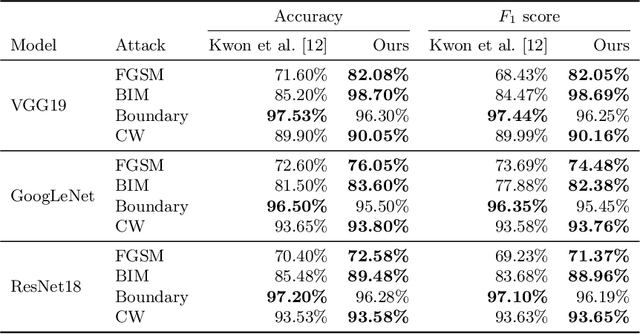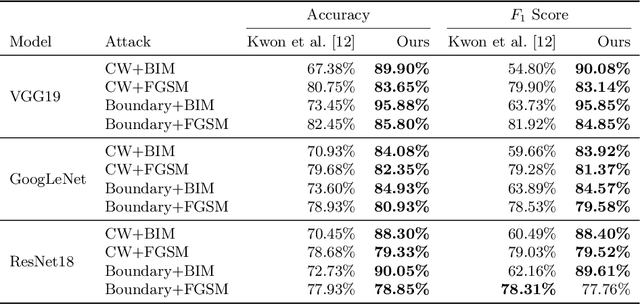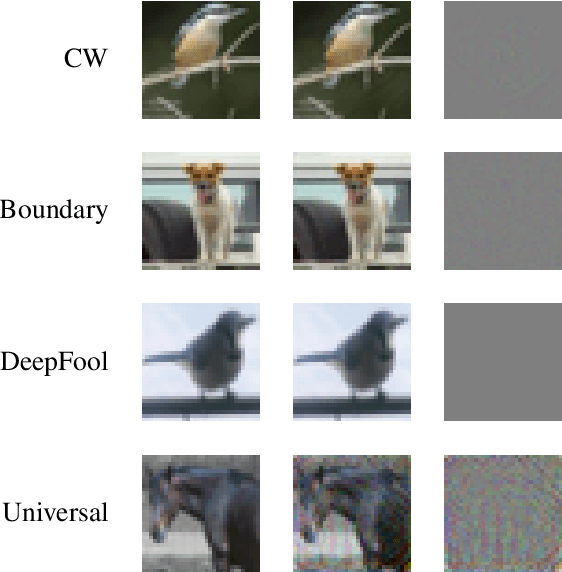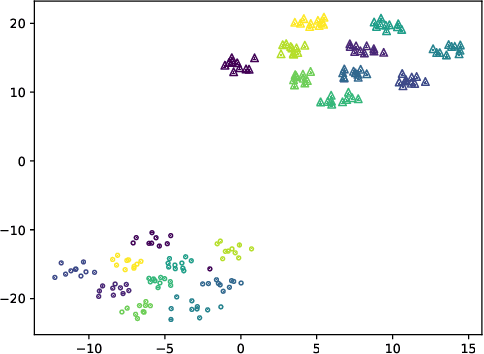Felix Michels
Scaling Up Deep Clustering Methods Beyond ImageNet-1K
Jun 03, 2024Abstract:Deep image clustering methods are typically evaluated on small-scale balanced classification datasets while feature-based $k$-means has been applied on proprietary billion-scale datasets. In this work, we explore the performance of feature-based deep clustering approaches on large-scale benchmarks whilst disentangling the impact of the following data-related factors: i) class imbalance, ii) class granularity, iii) easy-to-recognize classes, and iv) the ability to capture multiple classes. Consequently, we develop multiple new benchmarks based on ImageNet21K. Our experimental analysis reveals that feature-based $k$-means is often unfairly evaluated on balanced datasets. However, deep clustering methods outperform $k$-means across most large-scale benchmarks. Interestingly, $k$-means underperforms on easy-to-classify benchmarks by large margins. The performance gap, however, diminishes on the highest data regimes such as ImageNet21K. Finally, we find that non-primary cluster predictions capture meaningful classes (i.e. coarser classes).
Rethinking cluster-conditioned diffusion models
Mar 01, 2024Abstract:We present a comprehensive experimental study on image-level conditioning for diffusion models using cluster assignments. We elucidate how individual components regarding image clustering impact image synthesis across three datasets. By combining recent advancements from image clustering and diffusion models, we show that, given the optimal cluster granularity with respect to image synthesis (visual groups), cluster-conditioning can achieve state-of-the-art FID (i.e. 1.67, 2.17 on CIFAR10 and CIFAR100 respectively), while attaining a strong training sample efficiency. Finally, we propose a novel method to derive an upper cluster bound that reduces the search space of the visual groups using solely feature-based clustering. Unlike existing approaches, we find no significant connection between clustering and cluster-conditional image generation. The code and cluster assignments will be released.
Exploring the Limits of Deep Image Clustering using Pretrained Models
Mar 31, 2023Abstract:We present a general methodology that learns to classify images without labels by leveraging pretrained feature extractors. Our approach involves self-distillation training of clustering heads, based on the fact that nearest neighbors in the pretrained feature space are likely to share the same label. We propose a novel objective to learn associations between images by introducing a variant of pointwise mutual information together with instance weighting. We demonstrate that the proposed objective is able to attenuate the effect of false positive pairs while efficiently exploiting the structure in the pretrained feature space. As a result, we improve the clustering accuracy over $k$-means on $17$ different pretrained models by $6.1$\% and $12.2$\% on ImageNet and CIFAR100, respectively. Finally, using self-supervised pretrained vision transformers we push the clustering accuracy on ImageNet to $61.6$\%. The code will be open-sourced.
Contrastive Language-Image Pretrained Models are Powerful Out-of-Distribution Detectors
Mar 10, 2023Abstract:We present a comprehensive experimental study on pretrained feature extractors for visual out-of-distribution (OOD) detection. We examine several setups, based on the availability of labels or image captions and using different combinations of in- and out-distributions. Intriguingly, we find that (i) contrastive language-image pretrained models achieve state-of-the-art unsupervised out-of-distribution performance using nearest neighbors feature similarity as the OOD detection score, (ii) supervised state-of-the-art OOD detection performance can be obtained without in-distribution fine-tuning, (iii) even top-performing billion-scale vision transformers trained with natural language supervision fail at detecting adversarially manipulated OOD images. Finally, we argue whether new benchmarks for visual anomaly detection are needed based on our experiments. Using the largest publicly available vision transformer, we achieve state-of-the-art performance across all $18$ reported OOD benchmarks, including an AUROC of 87.6\% (9.2\% gain, unsupervised) and 97.4\% (1.2\% gain, supervised) for the challenging task of CIFAR100 $\rightarrow$ CIFAR10 OOD detection. The code will be open-sourced.
Learning to Detect Adversarial Examples Based on Class Scores
Jul 09, 2021



Abstract:Given the increasing threat of adversarial attacks on deep neural networks (DNNs), research on efficient detection methods is more important than ever. In this work, we take a closer look at adversarial attack detection based on the class scores of an already trained classification model. We propose to train a support vector machine (SVM) on the class scores to detect adversarial examples. Our method is able to detect adversarial examples generated by various attacks, and can be easily adopted to a plethora of deep classification models. We show that our approach yields an improved detection rate compared to an existing method, whilst being easy to implement. We perform an extensive empirical analysis on different deep classification models, investigating various state-of-the-art adversarial attacks. Moreover, we observe that our proposed method is better at detecting a combination of adversarial attacks. This work indicates the potential of detecting various adversarial attacks simply by using the class scores of an already trained classification model.
On the Vulnerability of Capsule Networks to Adversarial Attacks
Jun 09, 2019



Abstract:This paper extensively evaluates the vulnerability of capsule networks to different adversarial attacks. Recent work suggests that these architectures are more robust towards adversarial attacks than other neural networks. However, our experiments show that capsule networks can be fooled as easily as convolutional neural networks.
 Add to Chrome
Add to Chrome Add to Firefox
Add to Firefox Add to Edge
Add to Edge